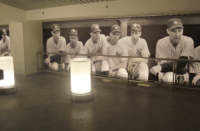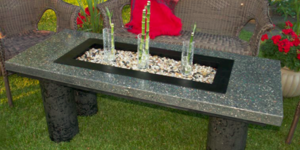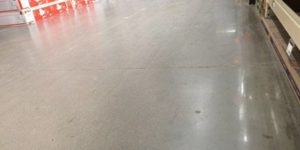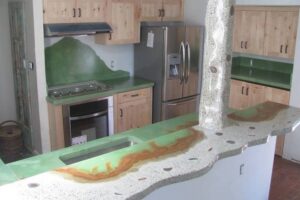
What type of hard surface can give off a mixture of colors, patterns and sheens? Not marble or slate. Nope, it’s concrete, one of the trendiest materials used for decorative countertops. In this feature, several manufacturers showcase just a few of the effects that have been achieved with their materials.
Concrete countertops are gaining attention as an inexpensive way to bring elegance and beauty into homes and commercial settings. “Homeowners and architects are starting to recognize that concrete countertops can fit into and elevate any style from modern to rustic,” says Jeffrey Girard, president of the Concrete Countertop Institute in Raleigh, N.C.
Girard notes that concrete has become a key element to consider when building new kitchens and bathrooms. “Concrete-countertop makers are starting to recognize they are part of a larger community that overlaps with the kitchen and bath industry as well as the decorative concrete industry,” he says.
One of the biggest challenges in using concrete as a countertop is protecting it from stains. Moisture is the enemy of concrete, and there is plenty of moisture in kitchens and bathrooms.
Concrete’s natural tendency to crack is another concern for customers. “Homeowners like the look of decorative concrete, but they’re concerned about stains and cracks,” says Steve Rosenblatt, president of Sonoma Cast Stone in Petaluma, Calif. “In recent years (our company has) developed a new surface that is virtually unstainable. And it gives the concrete the high-end look people want.”Tony Leff of SureCrete Design Products in Dade City, Fla., points to customization and environmental concerns as strong selling points for concrete countertops. “Consumers’ expectations have caused kitchens and bathrooms to become more elaborate and customized,” he says. “Add to that the continuing design of going green, and now a concrete countertop has a larger appeal.”
Concrete Countertop Institute
One of the advantages of decorative concrete is the ability to customize for a home or commercial setting. “People are beginning to understand that by using concrete in their homes and environments, they gain the ability to make that environment unique, even if it’s as simple as glass tiles arranged in just the right way in a plain white countertop,” says Jeffrey Girard, president of the Concrete Countertop Institute.
 |
 |
 |
Specialty Concrete Products
The designers at Specialty Concrete Products note that decorative concrete is changing the way people design their kitchens and bathrooms because of the versatility and color range that concrete can provide. SCP’s Dura-Top Concrete Countertop Mix is designed for both precast and cast-in-place countertops.
 |
 |
SureCrete Design Products
New decorative concrete applications have shortened the time it takes to produce countertops while adding strength to the finished product. “Engineers and contractors can now have a product at 1/2-inch thickness that has a flexural strength of 1,455 pounds per square inch with no steel reinforcement needed,” says Tony Leff of SureCrete Design Products. “And the product can cure in four hours and the polishing, staining and any secondary coloring system only takes eight hours.”
 |
 |
 |
Advanced Concrete Designs
One of the biggest challenges for decorative concrete countertops is resisting stains and other water damage. Advanced Concrete Designs offers a coating designed to last the life of the countertop.
|
|
|
Buddy Rhodes Artisan Concrete
Buddy Rhodes Artisan Concrete manufactures decorative concrete countertop products for a wide variety of applications, including kitchen counters, islands, sinks, furniture, baths, fireplaces, storefronts, tiles and planters.
Sonoma Cast Stone
Decorative concrete countertops have become a versatile alternative to stone in homes. “Designers see concrete as having much more feeling for residential use,” says Steve Rosenblatt, president of Sonoma Cast Stone. “You can use it in almost any application. Plus, you can select any color, unlike with marble.”



























